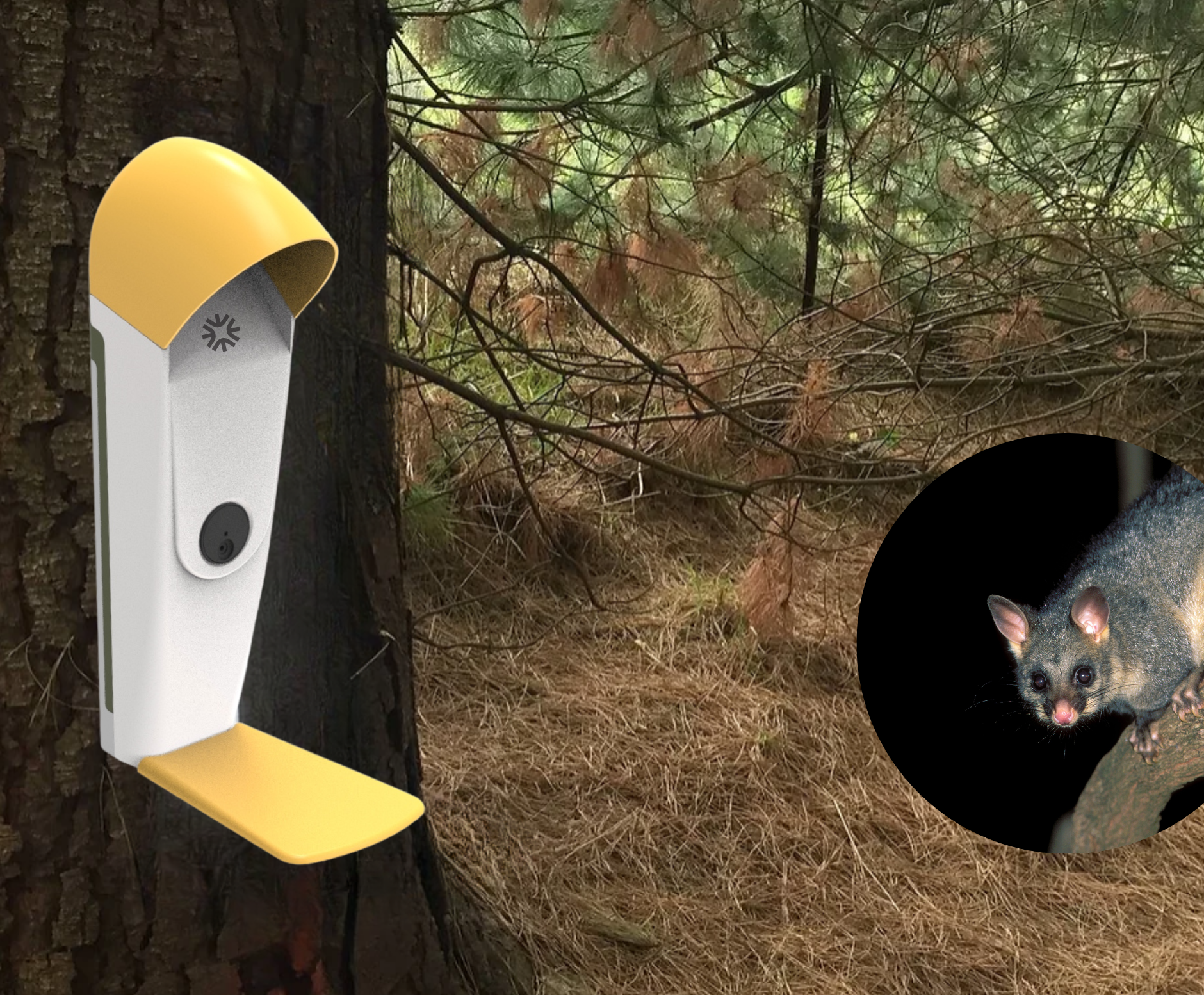Envico: Tech innovators for pest management and biodiversity preservation go global
For two innovators developing drone technology in their Auckland garage, a distant volcanic archipelago was far from their radar.
 But when Samuel Vye and Cameron Baker, co-founders of Envico Technologies, a breakthrough environmental tech company, found themselves spearheading an aerial baiting project in the Galapagos, they carved themselves a valuable niche.
But when Samuel Vye and Cameron Baker, co-founders of Envico Technologies, a breakthrough environmental tech company, found themselves spearheading an aerial baiting project in the Galapagos, they carved themselves a valuable niche.
That initial project evolved into the world’s first successful eradication of invasive rat species using drones. Two of Envico’s heavy-lift drones dropped 1.5 tonnes of targeted pest bait across two islands, protecting the threatened native seabird species that call the Galapagos home.
“The project expanded rapidly, gaining global recognition and support from the likes of film star and producer Leonardo DiCaprio,” says Cameron Baker, Envico CEO and co-founder. “Millions in funding was raised for the cause and people couldn’t believe we were building these drones in our garage back in Auckland!”
From an Auckland garage to an aircraft hangar in Tauranga
The company serves global customers as well as farmers and conservation organizations across New Zealand who benefit from Envico’s holistic approach to solutioning, and innovative technology specifically designed for difficult-to-access land.
The team now includes talented conservation, engineering and drone experts and their Tauranga HQ boasts an aircraft hangar. They’ve taken flight, developing five core conservation technology products with the support of funding through Callaghan Innovation’s Product Innovation Grant.
 The Spitfire trap in situ.
The Spitfire trap in situ.
Originally focused on drone load capability, the team identified the need for a full circle solution and expanded into drone mapping, drone thermal imaging, drone baiting, drone dispersed native seed pods, and eventually their automated land-based pest trap - the Spitfire.
“Our customers saw what we could achieve with our pest knock-down drone technology and sought our help with their longer term challenges of pest incursion and management. Market demand drove our innovation focus, which helped to ensure strong product market fit and the first comprehensive technology based offering for the sector,” explains Baker.
The Spitfire smart pest trap uses autonomous lure dispensers and species excluders to protect native species while enabling targeting of pest species like rats, possums, and stoats.
Each device contains 100 lethal doses of a targeted liquid toxin, dispensed when a pest is identified via sensor technology. The trap has the capacity to be left unattended for an entire year without maintenance or refills, significantly reducing the logistics load and labour costs involved in traditional pest management and increasing efficacy, meaning those managing land can gain greater value from their spend.
“Initially, the conservation applications of the Spitfire were our driving focus. However we quickly identified the benefits Spitfire could bring to farmers for protection of their crops against possums and TB,” notes Baker.
When under threat from a tuberculosis (TB) incursion, farmers often need to cull livestock, which is devastating for agricultural businesses. Providing smart, efficient protection against TB for farms became a clear market for Envico.
Pest problems can be extremely concerning for farmers.
“Some farmers regularly lose 30 percent of their crop to pests in the field alone. And then 40 percent of what’s actually harvested can be lost to pests once it’s in storage,” says Baker.
Getting pests under control can be the difference between running a sustainable and viable operation, or not.
– Cameron Baker
It didn’t take long to recognise the global applications of what they had developed. What worked in remote New Zealand bush could also be applied to farms in Australia, and other environments around the world. Envico’s Spitfire traps could simply be left to their own devices.
From Tauranga to the World
Targeting the agricultural market took Envico from working on homegrown grassroots conservation projects, to adapting their products and technology for the global stage.
“In Australia possums are a protected species and can’t be trapped,” says Baker. “We had to create a scalable, cost-efficient way to adjust our Spitfire smart traps to exclude possums and target only the desired pest.”
Envico’s holistic solutioning is hitting the mark. The team evaluates each customer's sustainable pest-control goals, before designing and implementing a pest solutions plan, which may include both aerial plus land based approaches, providing one of the most comprehensive offerings in the market.
Interest from the United States and the United Kingdom is high and government agencies, conservation organizations and private landowners are already requesting to join Envico’s consultation waitlist.
Envico has utilised nearly a dozen services provided by Callaghan’s Product Innovation Grant, including R&D services, business consulting services, IP to digital asset development, strategy programmes and access to experts in engineering, toxin development and hardware development to name a few.
The significant funding grants and resources they’ve received from Callaghan Innovation and the Agritech Activator have been extremely helpful in readying the company for global expansion.
– Cameron Baker
“Customers come to Envico because they need to ensure every dollar they spend is achieving the greatest possible impact,” says Baker.
“They seek to optimize their pest management and conservation efforts, eradicating species that threaten native wildlife, reducing disease risk, and supporting environments and communities to thrive.
“The holistic approach we bring, our expertise and speed to innovate, and the technology-enabled solutions we deliver, places Envico as the partner of choice for organisations wishing to gain the greatest bang for their conservation buck.”




